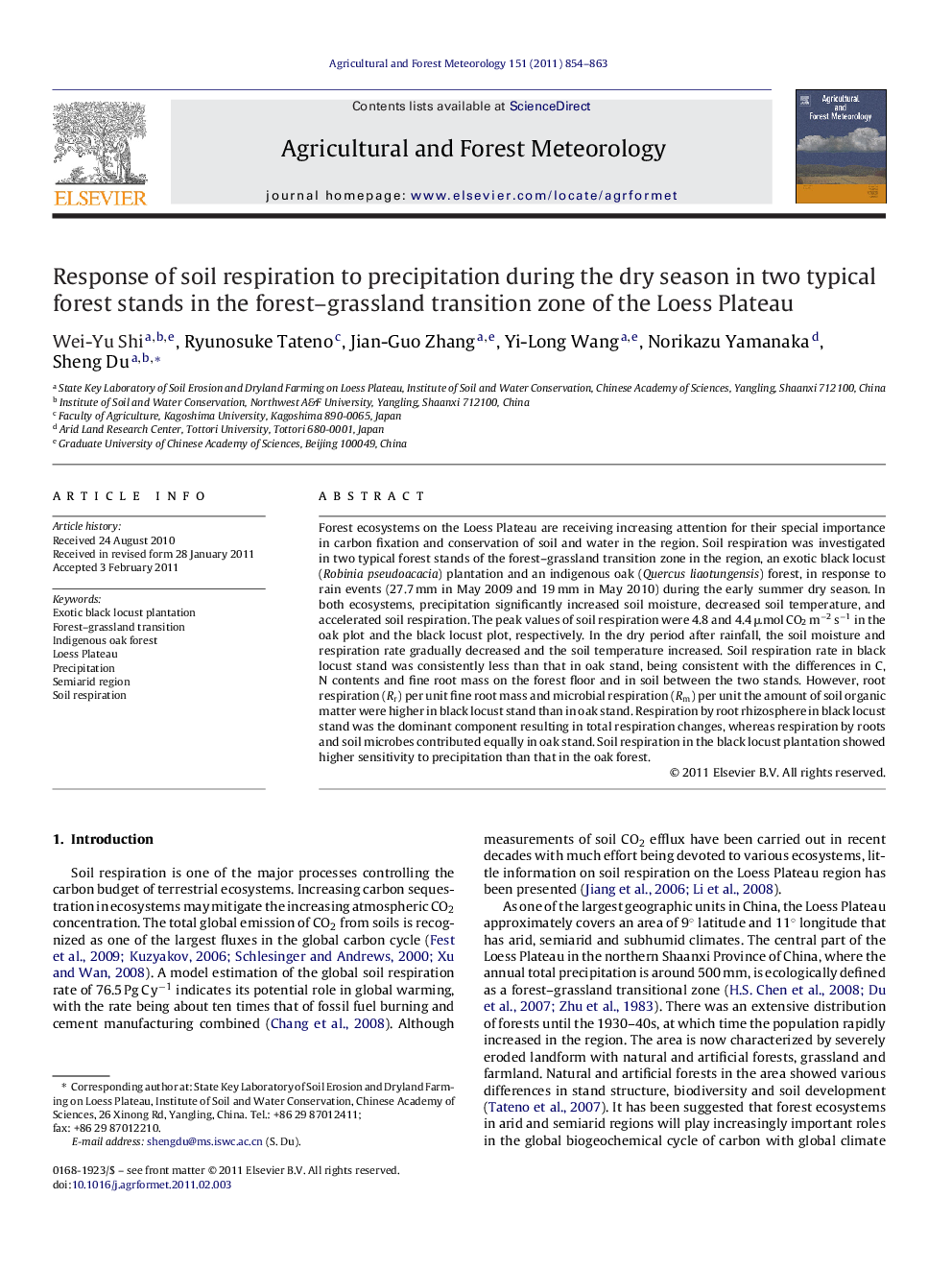| کد مقاله | کد نشریه | سال انتشار | مقاله انگلیسی | نسخه تمام متن |
|---|---|---|---|---|
| 82017 | 158367 | 2011 | 10 صفحه PDF | دانلود رایگان |

Forest ecosystems on the Loess Plateau are receiving increasing attention for their special importance in carbon fixation and conservation of soil and water in the region. Soil respiration was investigated in two typical forest stands of the forest–grassland transition zone in the region, an exotic black locust (Robinia pseudoacacia) plantation and an indigenous oak (Quercus liaotungensis) forest, in response to rain events (27.7 mm in May 2009 and 19 mm in May 2010) during the early summer dry season. In both ecosystems, precipitation significantly increased soil moisture, decreased soil temperature, and accelerated soil respiration. The peak values of soil respiration were 4.8 and 4.4 μmol CO2 m−2 s−1 in the oak plot and the black locust plot, respectively. In the dry period after rainfall, the soil moisture and respiration rate gradually decreased and the soil temperature increased. Soil respiration rate in black locust stand was consistently less than that in oak stand, being consistent with the differences in C, N contents and fine root mass on the forest floor and in soil between the two stands. However, root respiration (Rr) per unit fine root mass and microbial respiration (Rm) per unit the amount of soil organic matter were higher in black locust stand than in oak stand. Respiration by root rhizosphere in black locust stand was the dominant component resulting in total respiration changes, whereas respiration by roots and soil microbes contributed equally in oak stand. Soil respiration in the black locust plantation showed higher sensitivity to precipitation than that in the oak forest.
Research highlights
► Soil respiration rate increased after precipitation in an exotic black locust plantation and a native oak forest in the semiarid Loess Plateau region.
► Soil respiration is more sensitive to rainfall in the black locust plantation than in the oak forest.
► Soil respiration rate in the black locust plantation is less than in the natural oak forest, which was consistent with soil C, N contents and fine root mass in the two stands.
► Both stands showed a gradual decrease in soil respiration during the post-rainfall dry period, which was consistent with the changes in soil moisture but not temperature.
► The contribution of rhizosphere respiration to total soil respiration was less in the black locust plantation but was the dominant component resulting in total respiration changes.
Journal: Agricultural and Forest Meteorology - Volume 151, Issue 7, 15 July 2011, Pages 854–863